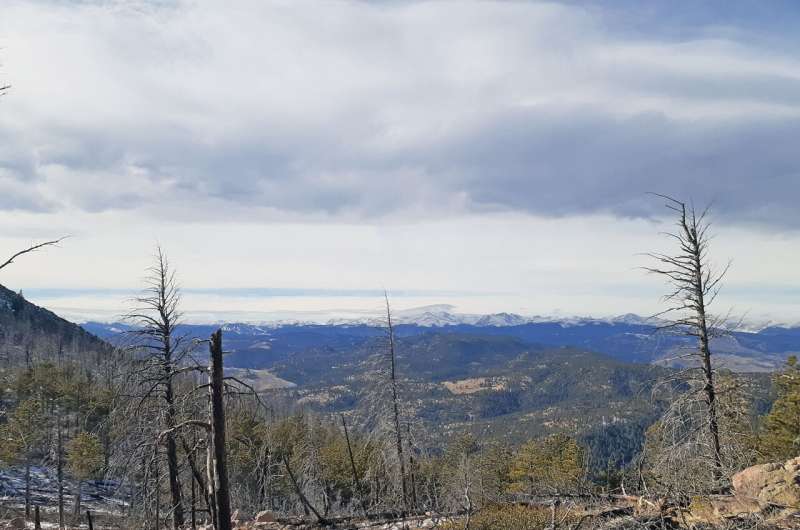This article has been reviewed according to Science X's editorial process and policies. Editors have highlighted the following attributes while ensuring the content's credibility:
fact-checked
proofread
Climate change expected to increase wildfire danger

WSL Institute for Snow and Avalanche Research (SLF) researchers expect an elevated wildfire danger in the Alpine Foreland from 2040 onwards due to changing meteorological conditions. The danger currently remains very low in that region, but there is likely to be a shift in this regard as a result of climate change.
There is likely to be a significant increase in the danger of wildfires through the 21st century. Indeed, the expectation is that by 2100 the danger will be high even in regions where it is very low today. Those are the findings of a study by Julia Miller, a Ph.D. student in the SLF's Hydrology & Climate Impacts in Mountain Regions research group, published in Natural Hazards and Earth System Sciences.
Forecasts show that the potential danger will continue to increase, but from 2040 onwards it will exceed the natural range of climate fluctuations and so will be attributed to climate change from then on. Taking the example of the Bavarian Alpine Foreland, this means that the meteorological wildfire danger will rise more rapidly from 2040 onwards, developing from low at present to high by the end of the 21st century.
A weather-related event that currently occurs only once every 60 years will happen on average every 10 years by 2090. The projections also show that favorable weather conditions for wildfires will occur earlier in the year than today, i.e. in or around May. Currently, the wildfire season often begins in June. Vegetation that is already dry also means that fires can start more easily and get out of control more quickly.
"Therefore, even regions with a temperate climate will need to prepare for wildfires in the future," says Julia Miller. Such preparations range from water reservoirs for fire-fighting helicopters to warning signs alerting local people to the danger.
"The number of days when the wildfire danger is at least 'high' will more than double by the end of the 21st century," predicts Miller. This trend is reinforced by factors such as hot, dry and windy weather. Summer heat waves and drought events also reduce soil moisture, increasing the flammability of the vegetation. Miller is here addressing an issue that the Intergovernmental Panel on Climate Change (IPCC) raised in a 2021 report.
For her study, Miller used a number of climate variables and took natural and climate-related fluctuations into account. She made her forecasts based on the Canadian Forest Fire Weather Index (FWI). Underpinned by meteorological data, the FWI is a numerical rating of how readily combustible material (e.g. trees, dead wood, dry leaves) ignites and how rapidly a fire can develop.
While the Mediterranean region and Western Canada have historically been prone to fire and have been extensively studied at a broader regional level, scientists have so far paid less attention to wildfires in the temperate regions of Europe. For her research, Miller used weather data from 'hydrological Bavaria' (the river catchments of the Danube, Main and Elbe), which she divided into four geographical and climatic subregions.
Given that the FWI does not take the vegetation situation into account, in her next study Miller would like to identify the role played by soil moisture and vegetation dryness in wildfire danger. She also analyzes the climatic conditions under which the danger is greatest and highlights the regional differences within Europe.
"Our aim is to show that wildfires in Europe can have different drivers. To this end, we would like to identify regional and seasonal differences in order to better understand the climatic factors that lead to large and uncontrollable wildfires," explains Miller.
More information: Julia Miller et al, Climate change impacts on regional fire weather in heterogeneous landscapes of central Europe, Natural Hazards and Earth System Sciences (2024). DOI: 10.5194/nhess-24-411-2024
Provided by Eidgenössische Forschungsanstalt für Wald, Schnee und Landschaft WSL


















